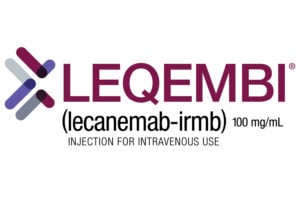Namzaric is a combination of the two most popular drugs for Alzheimer’s. Two new doses have been added, bringing the total to four. Find out how it helps and the details on the newest doses.
There are currently two FDA-approved ways to medically treat Alzheimer’s. One is using acetylcholinesterase inhibitors. They can help in most stages of Alzheimer’s. To understand how they work, watch the Teepa Snow video, "What Do Aricept, Exelon & Razadyne Do?"
The second way is by using NMDA receptor agonists. They can help in middle-to-advanced stages. Currently, only one drug is FDA-approved in this category, known generically as memantine, or by the brand name Namenda®.
| Brand Name | In Other Countries | Generic Name | How It Works |
|---|---|---|---|
| Aricept® | – | donepezil | AChEI |
| Exelon® | – | rivastigmine | AChEI |
| Razadyne® | Remynil® | galantamine | AChEI |
| Namenda® | Ebixa® | memantine | NMDA-RA |
| Namzaric® | – | donepezil + memantine |
Namzaric is a combination therapy that brings together the advantages of both approaches.
“Clinical studies have shown that combination therapy with Namenda XR and an AChEI such as Aricept demonstrated greater improvement in cognition and global function verses an AChEI alone. NAMZARIC offers the benefits of combining two products that each work differently to treat moderate to severe Alzheimer’s disease while at the same time reducing the number of pills a patient and their caregivers need to administer each day,” says Gavin Corcoran, M.D., chief medical officer at Allergan. “At Allergan, we’re proud to continue developing products and supporting new programs that can help patients and their caregivers as they navigate this complex disease.”
With the new indication, patients with moderate to severe Alzheimer’s disease, who are currently stabilized on Aricept, donepezil hydrochloride (10 mg), can now start combination therapy directly with NAMZARIC. Approximately 75% of patients diagnosed with Alzheimer’s Disease are in the moderate to severe stage of the disease and yet only about one-third of these patients are treated with combination therapy.
| * | Donepezil (Aricept®) | Memantine (Namenda/ Ebixa®) | Pills per bottle |
|---|---|---|---|
| NEW: | 10 mg | 7 mg | 30 |
| 10 mg | 14 mg | 30 or 90 | |
| NEW: | 10 mg | 21 mg | 30 |
| 10 mg | 28 mg | 30 or 90 |
All four dosage strengths of NAMZARIC® extended-release capsules that allow patients on donepezil 10 mg to start directly on NAMZARIC are now available by prescription in pharmacies throughout the U.S.
NAMZARIC is a once-daily, fixed-dose combination of memantine and donepezil. NAMZARIC’S new indication and dosage strengths were approved by the U.S. Food and Drug Administration (FDA) in July 2016.
“We are excited that with the new available dosage strengths patients with moderate to severe Alzheimer’s disease,” said Dr. Corcoran.
NAMZARIC will be commercially available in 30 count bottles in 7 mg/10 mg, 14 mg/10 mg, 21 mg/10 mg and 28 mg/10 mg. NAMZARIC is covered broadly by Medicare Part D prescription plans.
For more information about NAMZARIC, visit www.Namzaric.com.
About the Clinical Trial
The efficacy and safety of the coadministration of memantine HCl extended release and acetylcholinesterase inhibitors (AChEIs), including donepezil HCl, was based on the results of a randomized, double-blind, placebo-controlled trial of 677 patients with moderate to severe Alzheimer’s Disease on a stable dose of AChEIs. The clinical study was not conducted with Namzaric; however, bioequivalence of Namzaric with coadministered memantine HCl extended release and donepezil HCl was demonstrated. Approximately 68% of the patients randomized to receive either memantine HCl extended release 28 mg or placebo were taking donepezil as the AChEI at Baseline and throughout the study. The results of this study, demonstrated statistically significant improvement in cognition and global function for patients treated with NAMENDA XR (memantine HCl extended release) 28 mg plus an AChEI compared to placebo plus an AChEI at 24 weeks.
About NAMZARIC®
NAMZARIC is a once-daily, fixed-dose combination of memantine hydrochloride, a NMDA receptor antagonist, and donepezil hydrochloride, an acetylcholinesterase inhibitor indicated for the treatment of moderate to severe dementia of the Alzheimer’s type in patients stabilized on 10 mg of donepezil HCl once daily
Memantine hydrochloride extended-release is the active ingredient in the currently marketed NAMENDA XR®, which is indicated for the treatment of moderate to severe dementia of the Alzheimer’s type. Donepezil is the active ingredient in ARICEPT® (donepezil hydrochloride), which is indicated for the treatment of mild to severe dementia of the Alzheimer’s type.
Allergan and Adamas collaborated on the development of the fixed-dose combination and Allergan owns the exclusive U.S. commercialization rights, while Adamas (Nasdaq: ADMS) will retain exclusive commercialization rights outside of the U.S. Adamas is eligible to receive royalties from Allergan on the U.S. sales of NAMZARIC beginning in May of 2020.
IMPORTANT SAFETY INFORMATION
CONTRAINDICATIONS
NAMZARIC is contraindicated in patients with known hypersensitivity to memantine hydrochloride,donepezil hydrochloride, piperidine derivatives, or to any excipients used in the formulation.
WARNINGS AND PRECAUTIONS
Anesthesia
NAMZARIC is likely to exaggerate succinylcholine-type muscle relaxation during anesthesia.
Cardiovascular Conditions
NAMZARIC may have vagotonic effects on the sinoatrial and atrioventricular nodes manifesting as bradycardia or heart block. Bradycardia or heart block may manifest in patients both with and without known underlying cardiac conduction abnormalities. Syncopal episodes have been reported in association with the use of donepezil hydrochloride, an active ingredient in NAMZARIC.
Peptic Ulcer Disease and Gastrointestinal Bleeding
Patients treated with NAMZARIC should be monitored closely for symptoms of active or occult gastrointestinal bleeding, especially those at increased risk for developing ulcers, those with a history of ulcer disease, or those receiving concurrent nonsteroidal anti-inflammatory drugs (NSAIDs).
Nausea and Vomiting
NAMZARIC can cause diarrhea, nausea, and vomiting. Although in most cases, these effects have been mild and transient, sometimes lasting one to three weeks, and have resolved during continued use of donepezil hydrochloride, patients should be observed closely at the initiation of treatment.
Genitourinary Conditions
NAMZARIC may cause bladder outflow obstructions. Conditions that raise urine pH may decrease the urinary elimination of memantine, an active ingredient in NAMZARIC, resulting in increased plasma levels of memantine.
Seizures
Cholinomimetics, including donepezil hydrochloride, are believed to have some potential to cause generalized convulsions. However, seizure activity also may be a manifestation of Alzheimer’s disease.
Pulmonary Conditions
Cholinesterase inhibitors should be prescribed with care to patients with a history of asthma or obstructive pulmonary disease.
ADVERSE REACTIONS
- The most common adverse reactions, occurring at a frequency of at least 5% in patients taking memantine hydrochloride extended-release 28 mg/day, and greater than placebo, were headache (6% vs 5%), diarrhea (5% vs 4%), and dizziness (5% vs 1%).
- The most common adverse reactions, occurring at a frequency of at least 5% in patients taking donepezil, and at twice or more the rate of placebo, were diarrhea (10% vs 4%), anorexia (8% vs 4%), vomiting (8% vs 4%), nausea (6% vs 2%), and ecchymosis (5% vs 2%).
DRUG INTERACTIONS
- Alterations of urine pH toward the alkaline condition may lead to an accumulation of memantine with a possible increase in adverse reactions. NAMZARIC should be used with caution under conditions that may be associated with increased urine pH including alterations by diet, drugs, and the clinical state of the patient.
- The combined use of memantine hydrochloride with other NMDA antagonists (amantadine, ketamine, and dextromethorphan) has not been systematically evaluated and such use should be approached with caution.
- Inhibitors of CYP450, 3A4 (eg, ketoconazole) and 2D6 (eg, quinidine), inhibit donepezil metabolism in vitro. Whether there is a clinical effect of quinidine is not known.
- Inducers of CYP3A4 (eg, phenytoin, carbamazepine, dexamethasone, rifampin, and phenobarbital) could increase the rate of elimination of donepezil.
- Cholinesterase inhibitors, including donepezil hydrochloride, have the potential to interfere with the activity of anticholinergic medications.
- A synergistic effect may be expected when cholinesterase inhibitors, including donepezil hydrochloride, are given concurrently with succinylcholine, similar neuromuscular blocking agents, or cholinergic agonists such as bethanechol.
DOSAGE AND ADMINISTRATION
For patients stabilized on donepezil and not currently on memantine:
For patients stabilized on donepezil hydrochloride 10 mg and not currently on memantine hydrochloride, the recommended starting dose of NAMZARIC is 7 mg/10 mg, taken once a day in the evening. The dose should be increased in 7 mg increments of the memantine hydrochloride component to the recommended maintenance dose of 28 mg/10 mg once daily. The minimum recommended interval between dose increases is one week. The dose should only be increased if the previous dose has been well tolerated. The maximum dose is 28 mg/10 mg once daily.
For patients with severe renal impairment (creatinine clearance 5-29 mL/min, based on the Cockcroft-Gault equation) stabilized on donepezil hydrochloride 10 mg once daily and not currently on memantine hydrochloride the recommended starting dose of NAMZARIC is 7 mg/10 mg taken once a day in the evening. The dose should be increased to the recommended maintenance dose of 14 mg/10 mg once daily in the evening after a minimum of one week.
For patients stabilized on both donepezil and memantine:
Patients stabilized on memantine hydrochloride (10 mg twice daily or 28 mg extended-release once daily) and donepezil hydrochloride 10 mg once daily can be switched to NAMZARIC 28 mg/10 mg, taken once a day in the evening. Patients should start NAMZARIC the day following the last dose of memantine hydrochloride and donepezil hydrochloride administered separately.
Patients with severe renal impairment, stabilized on memantine hydrochloride (5 mg twice daily or 14 mg extended-release once daily) and donepezil hydrochloride 10 mg once daily, can be switched to NAMZARIC 14 mg/10 mg, taken once daily in the evening.
For Full Prescribing Information, visit www.namzaric.com
About Allergan
Allergan plc (NYSE: AGN), headquartered in Dublin, Ireland, is a unique, global pharmaceutical company and a leader in a new industry model – Growth Pharma. Allergan is focused on developing, manufacturing and commercializing innovative branded pharmaceuticals, high-quality generic and over-the-counter medicines and biologic products for patients around the world.
Allergan markets a portfolio of best-in-class products that provide valuable treatments for the central nervous system, eye care, medical aesthetics, gastroenterology, women’s health, urology, cardiovascular and anti-infective therapeutic categories, and operates the world’s third-largest global generics business, providing patients around the globe with increased access to affordable, high-quality medicines. Allergan is an industry leader in research and development, with one of the broadest development pipelines in the pharmaceutical industry and a leading position in the submission of generic product applications globally.
With commercial operations in approximately 100 countries, Allergan is committed to working with physicians, healthcare providers and patients to deliver innovative and meaningful treatments that help people around the world live longer, healthier lives.
For more information, visit Allergan’s website at www.allergan.com.
About Adamas Pharmaceuticals, Inc.
Adamas Pharmaceuticals, Inc. is driven to improve the lives of those affected by chronic disorders of the central nervous system. The company seeks to achieve this by modifying the pharmacokinetic profiles of approved drugs to create novel therapeutics for use alone and in fixed-dose combination products. Adamas is currently developing ADS-5102, its lead wholly-owned product candidate, for the treatment of levodopa-induced dyskinesia associated with Parkinson’s disease and for the treatment of walking impairment in patients with multiple sclerosis. The company is also evaluating ADS-4101, an extended-release version of an FDA-approved single-agent compound for the treatment of epilepsy. Under a license agreement with Forest Laboratories Holdings Limited, an indirect wholly-owned subsidiary of Allergan plc, the company is eligible to receive royalties from Forest on sales of Namenda XR® and Namzaric™ beginning in June of 2018 and May of 2020, respectively.
For more information, please visit www.adamaspharma.com.











